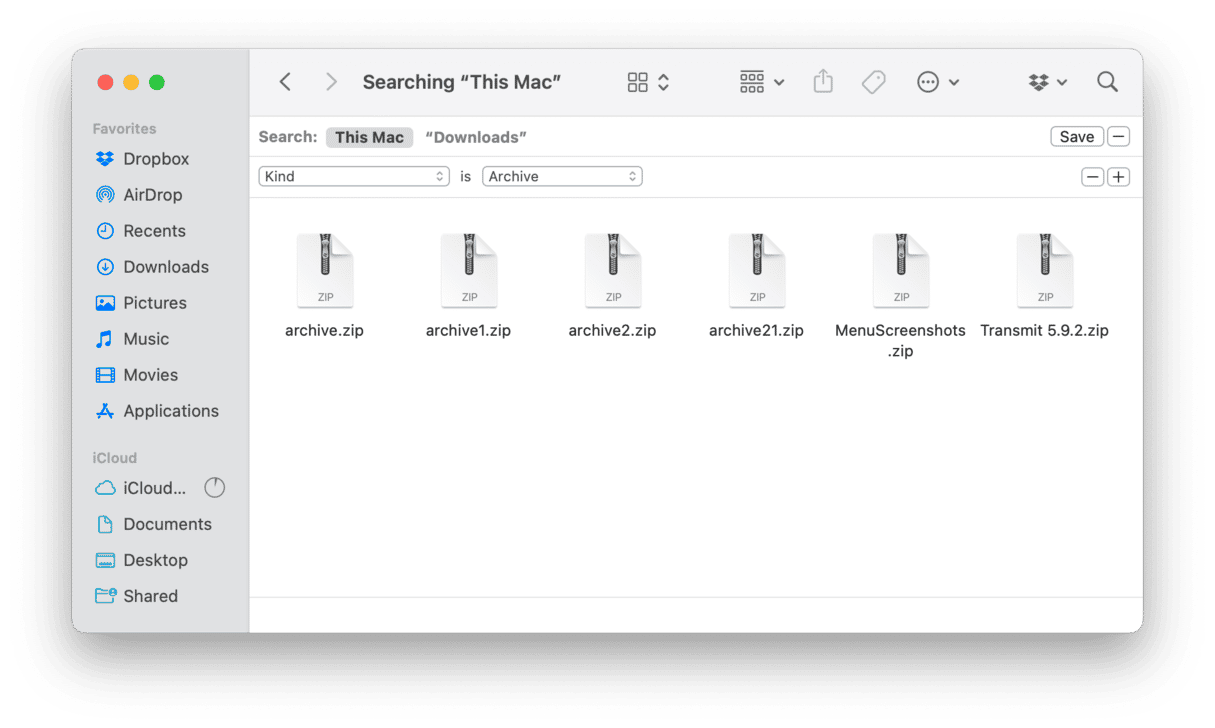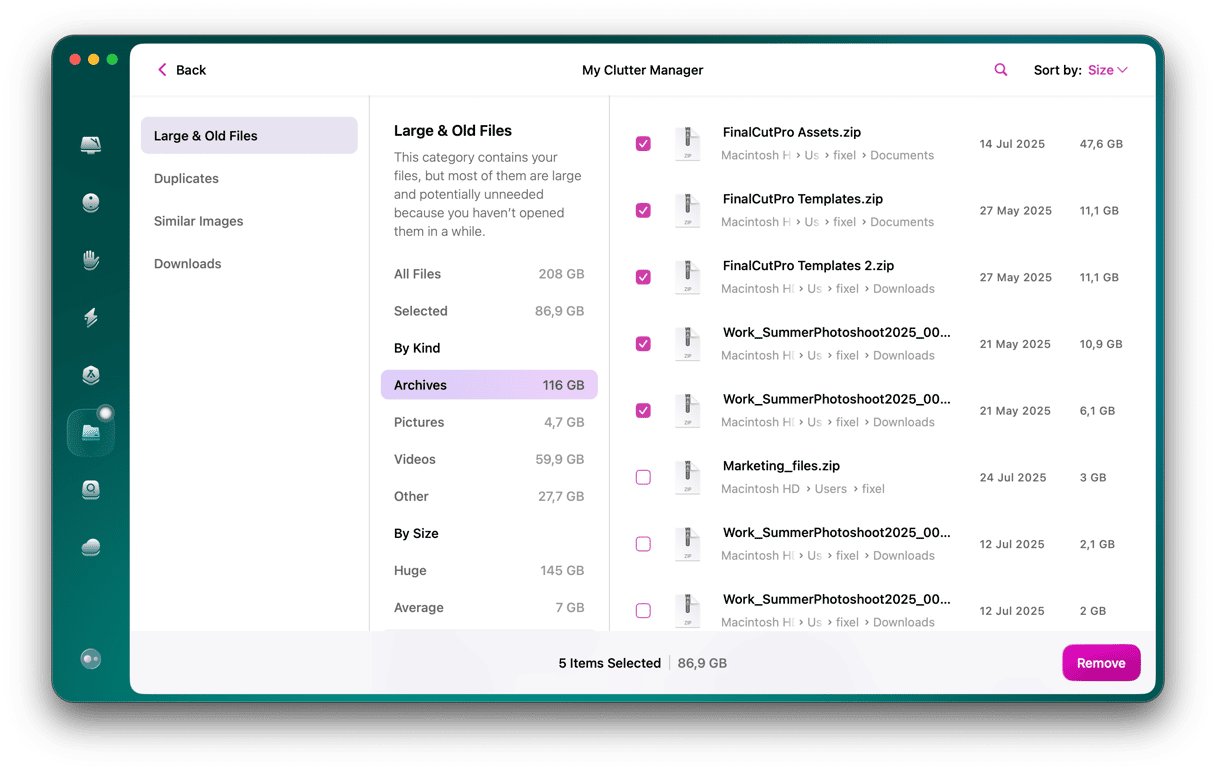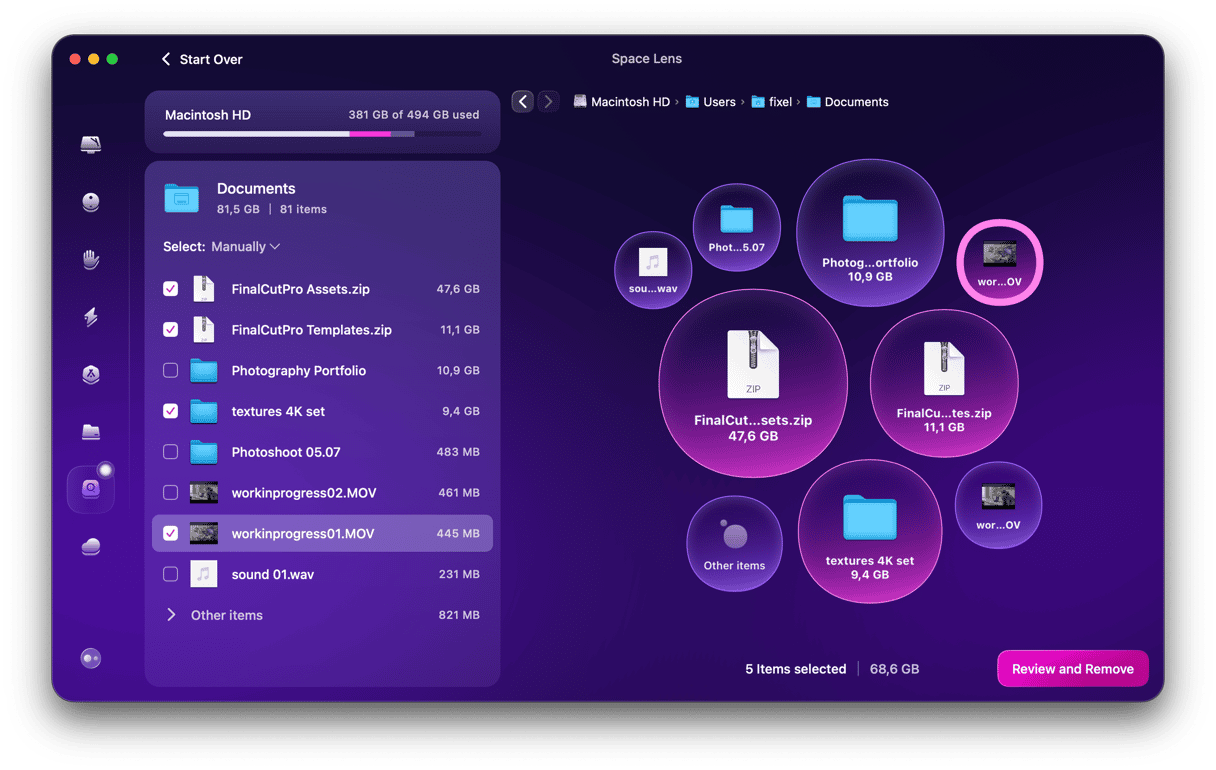In this article, we look at how to compress and decompress files on a Mac and the ways you can do that with different formats.
RAR vs. ZIP files: What is the difference?
Everyone knows what a ZIP file is. Once you’ve made a folder, you click on File from the menu bar and scroll down to Compress. That turns whatever folder you’re compressing into a ZIP file.
Wherever you send it, whether someone is using a macOS device or Windows — or other operating systems — a ZIP folder can be decompressed and opened. It is one of the most convenient ways to send large files in a single folder, usually through email or messenger platforms.
Some email systems, such as Gmail, limit the file size, so if something is too large, they convert the contents into a Google Drive folder. And ZIP folders can be uploaded and shared using file-transfer systems and cloud-storage solutions.

Easy, right?
Yes, in most cases — unless the files have been corrupted or, for some reason, the receiving computer can’t decompress them — ZIPs work everywhere, on every device. ZIP files can be created and decompressed using native macOS systems that have worked this way since the file format was created.
One of the reasons ZIPs are so easy to create and unzip is that the proprietary software was released into the public domain in 1989. Making ZIPs open-source so that every operating system creator in the world could bake this into file formatting. Hence, how useful ZIPs are and why most people use them for sending and receiving large files on Macs.
A RAR file, on the other hand, is a little different.

RAR files are, in many ways, more secure. RAR files are a proprietary archive format (file prefixes usually look like .rar).
RAR files also benefit from being able to compress much larger amounts of data. It is said they can compress up to one billion gigabytes (also known as an exabyte). They compress and transmit more quickly. RAR files are more secure, can be password protected (as can ZIPs), and even encrypted using AES-256 encryption.
How to compress and decompress RAR files on a Mac?
RAR files are more complicated to compress and decompress.
With RAR files being the result of proprietary software, you need to download software to create and decompress RAR files on your Mac. Apple’s Archive Utility does not support RAR, so you need to find another way to work with these files.
One option is The Unarchiver, a free third-party macOS app.
With this MacPaw app, you can open RAR on Mac. It’s times more powerful than the native macOS utility and supports infinitely more archive formats. Download and install The Unarchiver. It’s free, and there is no need for in-app purchases. Now whenever you want to send or receive a RAR file, use The Unarchiver to compress and decompress these files. It really is as easy as that! Over time, ZIP and RAR files can take up space. This can slow your Mac down. Or maybe you’ve lost a file and want to find it again. We’ve got a solution for those problems.
How to find your hidden archives?
Sometimes, we download an archive, unpack it, and then forget to delete it. Over time, such long-forgotten archives occupy more and more space and clutter up our hard drives.
Here is a tip on how to find and delete ZIP, RAR, and other files that you don’t need anymore:
- Open CleanMyMac — get your free trial here.
- Now, click Clutter and run a scan.
- Click Review All Files and sort the results by Archives — this will show hidden and forgotten ZIP and RAR files.
- Either delete or unzip/decompress them and free up some space.

As you can see, I’ve found several GB worth of archives on my Mac. If you want to free up even more space, check other tabs — Duplicates, Similar Images, and Downloads. They will help you find even more unneeded files taking up storage.
But that’s not all. Something else CleanMyMac can do is find hidden files with its Space Lens feature. This way, you can more easily find what you’ve been looking for. It’s also a convenient way to clear out files that are taking up too much space when they’re not needed anymore. Just run a quick scan and see how many files remain hidden from your sight.

CleanMyMac is a useful Mac performance improvement app. It can get your Mac running as good as new again. Creating more space and improving how other apps and the operating system performs with maintenance scripts and other handy tools.







